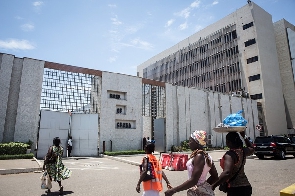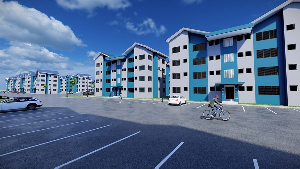Just as was widely anticipated, lending to Ghana’s private sector has slowed considerably since the arrival of the global coronavirus pandemic earlier this year.
Year on year growth in private sector credit had fallen to 12.42 percent by June 2020, down from 23.11 percent as at January this year. Indeed the year on year growth rate for private sector credit declined consistently every month during the first half of this year.
Curiously however, this trend began before the first cases of COVID 19 were detected in Ghana in March.
In that month y/y credit growth was 17.09 percent, down from 18.80 percent in February, suggesting that the decline in growth of credit to the private sector is not wholly the result of the economic uncertainties imposed by the impact of the viral outbreak.
The slowdown has defied concerted efforts to encourage new lending through monetary stimulus measures announced by the Bank of Ghana in March and April.
Those measures include a lowering of the key Monetary Policy Rate from 16 percent to 14.5 percent and a subsequent cut in the Ghana Reference Rate (which effectively serves as the base lending rate for all the banks); a lowering of the capital adequacy ratio plus capital buffer from 13 percent to 11.5 percent; and a reduction in the statutory reserve requirement from 10 percent to 8 percent.
However, as widely anticipated, banks have preferred to focus on restructuring their existing loans rather than book new ones. This is primarily because the impact of COVID-19 and the consequent public policy responses in the form of economic and social restrictions has made it difficult for commercial lenders to measure the actual credit risk accompanying new lending.
However the 2 percent cut in lending rates on both existing and new loans, negotiated by government with the Ghana Association of Bankers and effective until COVID-19 subsides, has also discouraged new lending by reducing the risk premium available to banks as a reward for lending to private enterprise rather than investing in risk free government debt securities such as treasury bill and bonds.
This has resulted in y/y growth in private sector credit falling to its slowest level since the end of the BoG’s far reaching financial sector reforms at the beginning of 2019. Last year, the lowest y/y credit growth was in September when it measured 12.62 percent.
Banking industry analysts suspect that the reason why credit growth starting slowing ahead of the arrival of COVID-19 into Ghana is that the bulk of lending is done by foreign owned banks and the headquarters of many of those banks are situated in countries where COVID-19 appeared before its arrival in Ghana. Thus, continues this theory, the Ghanaian subsidiaries were advised to slow their loan book growth even before the virus actually arrived in Ghana.
The result of the slow down in credit growth is that the cumulative loan book of the entire banking industry with regards to loans to the private sector barely grew during the first half of 2020, with the industry’s claims on the private sector increasing only marginally from GH¢56,491 million as at the end of 2019 to GH¢56,697 million by the end of June this year.
Business News of Saturday, 12 September 2020
Source: goldstreetbusiness.com
Coronavirus: Bank lending to private sector declines
Entertainment












